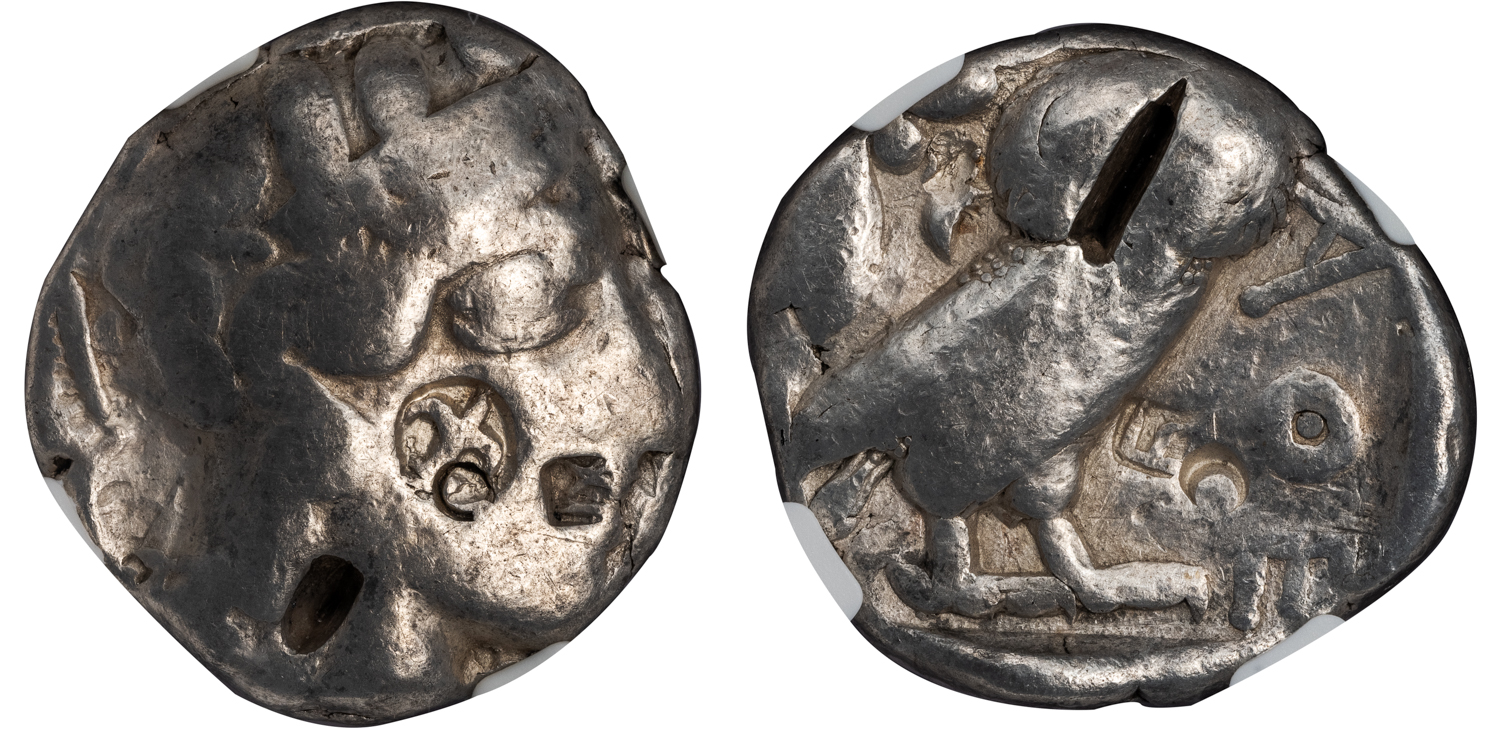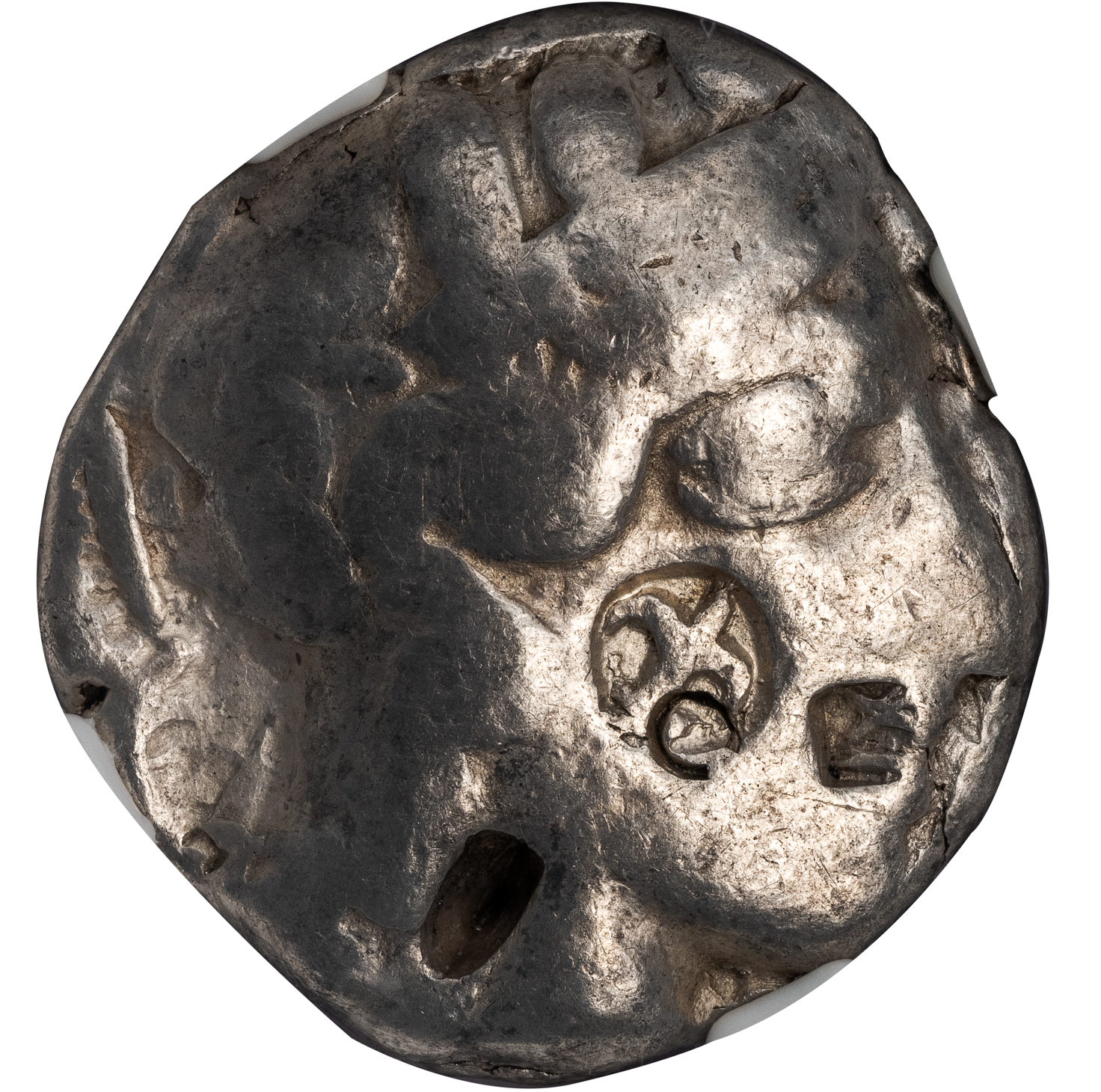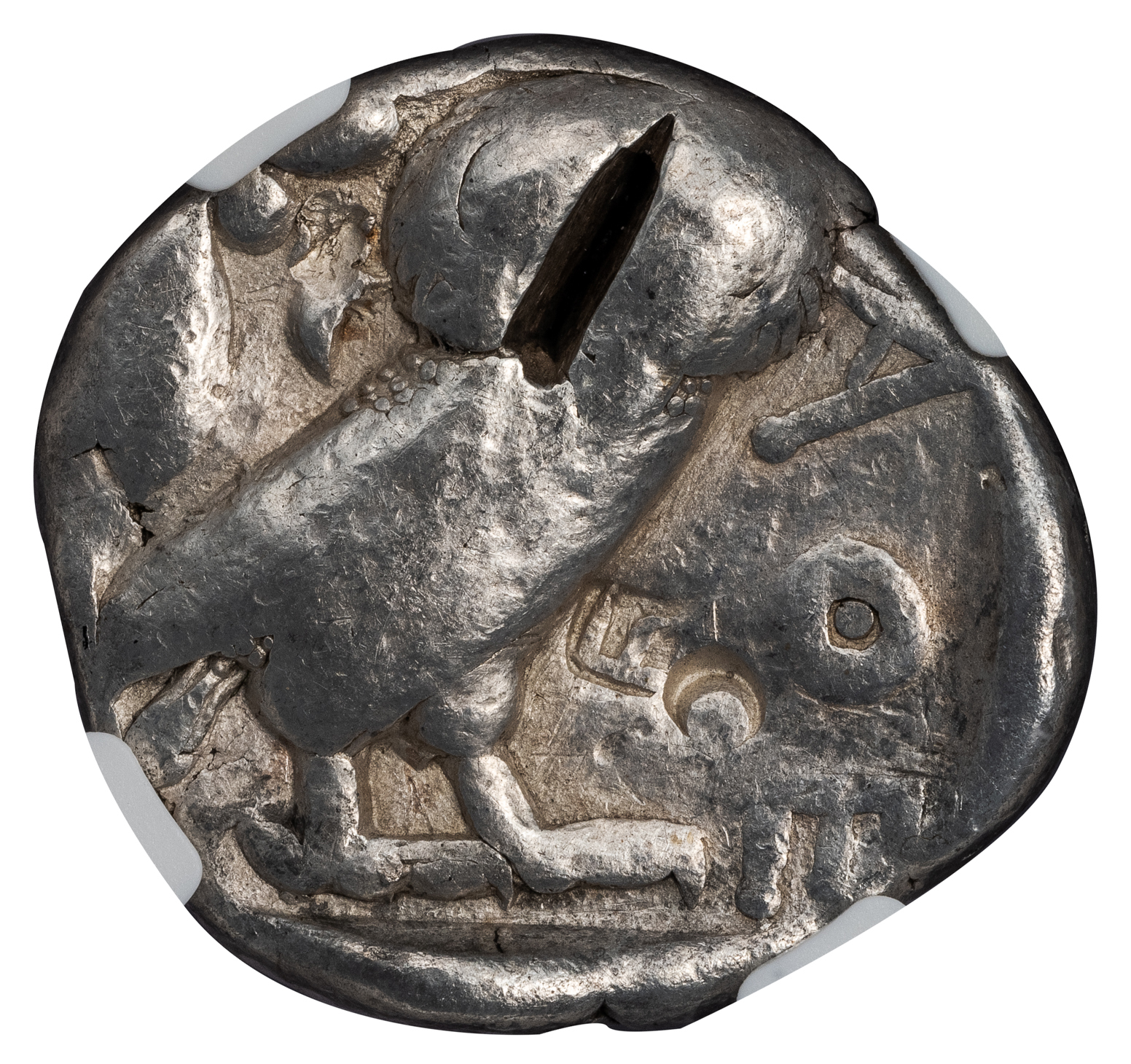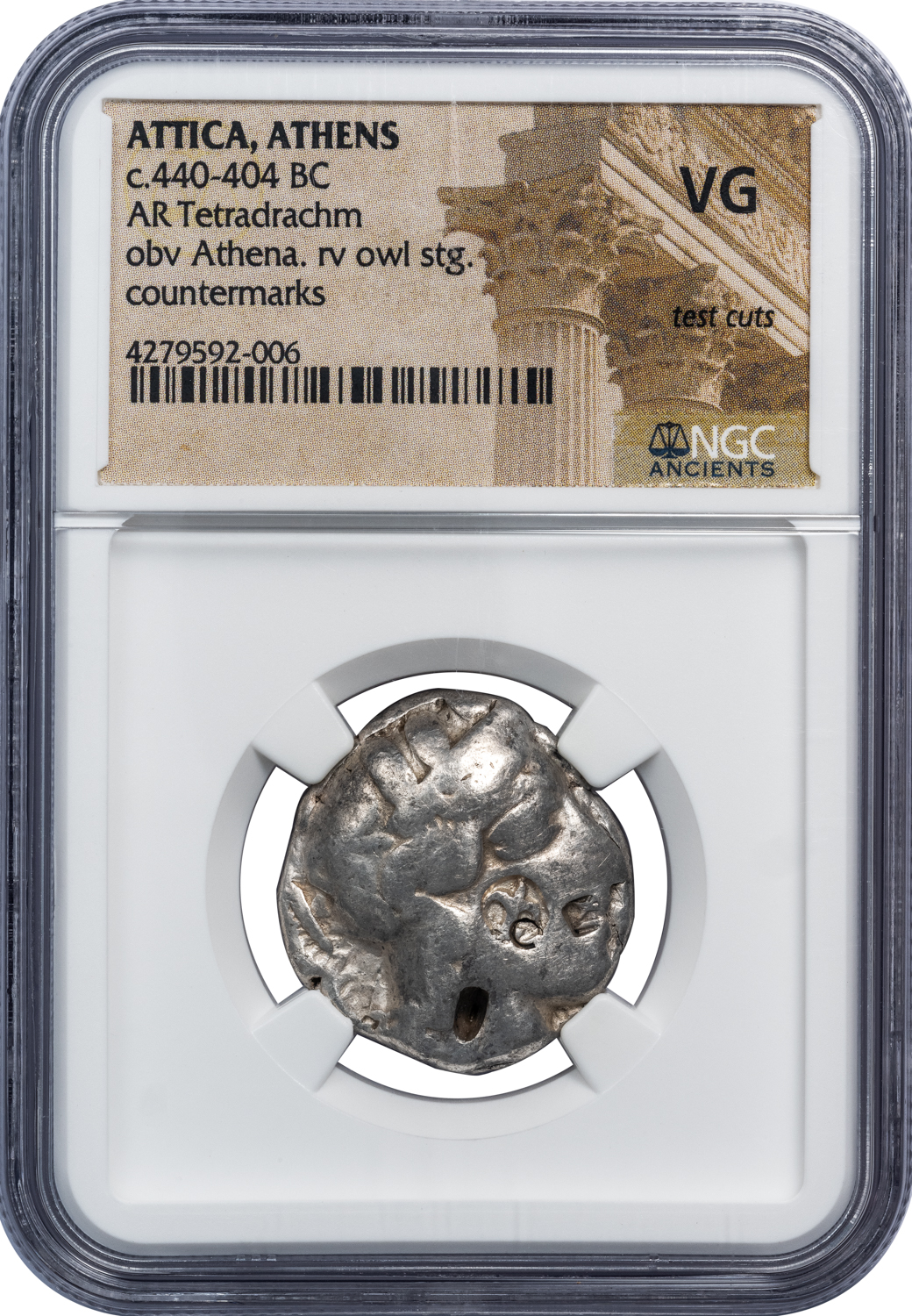ATHENS SILVER TETRADRACHM – POSSIBLY COUNTERMARKED IN JERUSALEM WITH LILY COUNTERMARK – VG NGC GRADED GREEK JEWISH COIN (Inv. 11845)
$650.00
11845. ATTICA. ATHENS. Ca. 440–404 BC, POSSIBLY COUNTERMAKED IN JERUSALEM.
Silver tetradrachm, 25 mm.
Obv. Helmeted head of Athena right. Rev. ΑΘΕ, owl standing right, head facing, olive sprig and crescent in left field, all within incuse square.
Kroll 8; SNG Copenhagen 31; Dewing 1591–1598. For these Levantine countermarks in general see Peter Van Alfen, AJN 14 (2002), pp. 4 ff., and T.V. Buttrey in Proceedings of the 9th International Congress of Numismatics, Berne (1979), vol. I, Louvain–la–Neuve (1982), pp. 137–140, pl. 21, 3 (style M) who discuss more on attribution.
NGC graded VG, “test cuts,” “countermarks,” the lily countermark on obverse, a variety of other countermarks, punch marks or tests cuts on the reverse.
The lily was the symbol of Jerusalem and appears early on in its fourth century Persian–period Yehud coinage and continues as a prominent symbol of the city on later Hasmonean and Seleucid emissions as well. Although it is not certain that the lily countermark was applied in Jerusalem, it is undoubtedly connected in some way to that area, whether it is the mark of the city itself or of a man who originated there and appropriated it as his own badge. It certainly was applied in the general geographical area as the Athenian tetradrachms on which it is found circulated in the Levant, in the regions encompassing the modern states of Israel, Lebanon and Egypt.




